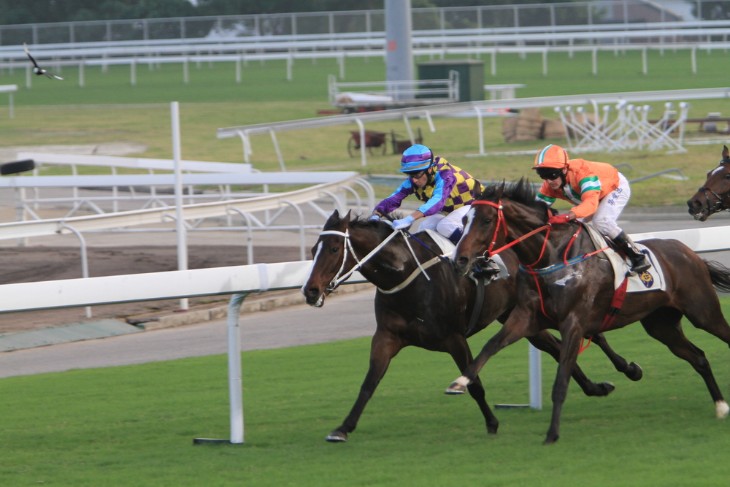There are several quintessential elements in horse racing. Besides horses and jockeys, there is also the surface. Because, just like in any other racing sport, the surface is the basis, from which everything else begins. Athleticism, skill, speed – all these things are closely related to the surface, so whichever words we use, it won’t be enough to explain them in a few lines, to explain how they provide a fair and consistent environment for competitors.
And, in this small world of horse racing surfaces, there is one thing that comes to mind. What is Tapeta in horse racing? What’s its difference compared to other surfaces? Well, it stands out as the most innovative option around because, unlike traditional tracks based on dirt or turf, this one is synthetic, designed to ensure optimal performance, but also the safety of horses, jockeys and other participants. Because its consistent and resilient foundation remains unchanged no matter the weather conditions. With all that in mind, let’s check what else is so good about it that it makes the primary choice in the world of horse racing.
A brief overview of different types of horse racing surfaces
Dirt Tracks:
- Description: Dirt tracks are composed of natural soil in combination with materials such as clay, sand, and silt. Dirt tracks are found in several horse racing tracks throughout the world.
- Characteristics: Dirt tracks can have different textures based on weather conditions during a specific time. They can be either quick and firm, tacky, or sloppy and muddy. When excellent weather conditions prevail during a race, the dirt tracks create the classic racing experience.
- Advantages: Dirt tracks enable excellent traction for horses, enabling them to dig in and advance. Similarly, dirt tracks are generally inexpensive to build and maintain.
Turf Tracks:
- Description: Turf tracks, or grass tracks, are tracks made of natural grass or synthetic turf. They are popular in Europe and most of Asia.
- Characteristics: Turf tracks are softer compared to dirt tracks. It can be critical when a horse has specific types of problems with the hoof or legs. They are also well-draining, allowing the track to be suitable for racing even in rainy weather.
- Advantages: Turf tracks are used because they cushion the ride, protecting the joints of horses.
Synthetic Tracks (e.g., Tapeta, Polytrack):
- Description: Synthetic tracks are artificial tracks created from various materials like fibres, polymers, sand, and wax.
- Characteristics: Such tracks should be uniform and good throughout the year and guarantee a certain level of comfort and stability on the surface. They imitate the best qualities of dirt and turf tracks.
- Advantages: Synthetic tracks are beneficial because of shock absorption, also guarantee a more even and comfortable surface, which both avoids injuries and ensures equal and fair racing conditions.
History and Development of Tapeta
Although based on pretty modern technology, the history of Tapeta and its use in the sport dates long ago. This synthetic excellent was imagined and developed by the legendary trainer and innovator Michael Dickinson and if you wonder why Tapeta, it’s the long word for a carpet. We guess Dickinson wanted to accentuate its smooth, consistent and resilient character. This was the production of a vision to create a surface that would not just optimise performance, but also address safety concerns in a much better way.
In the very beginning, the development was all about extensive research and experiments with various materials. Dickinson had the goal of developing a surface that could withstand various outside factors, particularly weather conditions. The goal was to ensure excellent traction and minimise the risk of injuries. And, after some time, Tapeta came as a high-tech synthetic wonder, which is actually a mix of different materials, such as fibres, polymers and wax.
Initially, the new technology was presented in several racing events and soon after, it gained recognition for its reliability and safety benefits. The adoption process was pretty quick because Tapeta was a significant departure from traditional dirt and turf tracks. It was a revolution that brought all-weather capabilities to the horse racing universe. Over the years, Tapeta has been perfected and now stands as the best available solution when we talk about the overall experience not just for horses, but for jockeys and trainers as well.

Composition and Characteristics of Tapeta
What is Tapeta in horse racing? It is a piece of engineering excellence, designed to provide a sophisticated mix of materials and offer an optimal environment for horse racing. When we talk about materials, it is a mix of various things, primarily high-quality silica, recycled rubber and fibres. Most of these materials are usually sourced from textiles and various synthetic materials. Then, all these things get mixed with a blend of wax binders, predominantly polypropylene. The result is a consistent and cushioned surface with all kinds of amazing features. Excellent shock absorption is one of them, along with stability underfoot, which ensures obvious advantages over traditional surfaces.
So, when we talk about key characteristics, it’s first and foremost about the safety and performance of horses, as well as jockeys. And, the quintessential characteristic is superior capability when it comes to drainage. Water easily passes through, so scenarios of muddy and slippery conditions are completely excluded. Then, there is the matter of consistency, as Tapeta ensures exceptional longevity, durability and uniformity of its texture and firmness, meaning that there are no unexpected variations in footing.
Moreover, all these features make it the best choice for all-weather racing. Natural surfaces are extremely vulnerable to outside factors. With Tapeta, that’s not the case. It remains consistent through extended periods, no matter the rain, heat or cold, which makes it safe, reliable and fair no matter the weather conditions.
Advantages of Tapeta Tracks
1. Enhanced Safety:
- Fewer Injuries: The shock absorption qualities of the cushioned Tapeta surface result in less strain on a horse or horse’s legs and lower instances of injuries such as those in the joints and hoofs among others.
- Footing: The uniform nature of Tapeta also ensures that horses have more footing during the race hence the fewer instances of slipping and falling.
2. All-Weather Capabilities:
- Consistent Performance: Tapeta tracks remain reliable under various weather conditions, including rain and extreme temperatures. Races can proceed without interruption, offering a dependable surface for both training and competitive events.
- Minimised Weather-Related Disruptions: Unlike natural tracks that can become muddy or uneven in adverse weather, Tapeta's drainage properties prevent water accumulation, allowing races to continue even during and after rain showers.
3. Fair Competition:
- Level Playing Field: Tapeta provides a consistent surface, ensuring that all horses have an equal opportunity to perform their best. It eliminates the variability that can occur on natural tracks due to weather changes or track maintenance.
- Predictable Conditions: Trainers and jockeys can rely on Tapeta's predictable conditions, allowing them to prepare their horses more effectively for races and make strategic decisions with confidence.
4. Longevity and Durability:
Overall, Tapeta undoubtedly is a better surface that translates to its long lifespan and proves to be cost-effective. As the construction of the track can last over many years without losing its quality, owners and stakeholders only incur high initial investments and avoid taking the renovation and foreseeable regular maintenance.
5. Positive Impact on Horse Health:
- Reduced Stress: Horses tend to experience less stress and fatigue when running on Tapeta surfaces, as the consistent and cushioned footing allows for a more natural and comfortable stride.
- Enhanced Recovery: Due to the reduced physical impact on horses' limbs, Tapeta tracks can contribute to faster post-race recovery, ensuring the well-being of equine athletes.
Ultimately, Tapeta tracks as a whole are a safe, reliable, fair, durable, and health-improving track system that has revolutionised the racing experience and horse welfare standards. It is about providing the best possible conditions for horses and jockeys and racecourses, and Tapeta racing surfaces fulfil this ideal summarily.
Challenges and Maintenance of Tapeta Tracks
But although great, Tapeta isn’t without drawbacks. So, let’s say a few words about the challenges and maintenance of Tapeta tracks. Of course, the first thing that comes to mind is the surface’s consistency. Despite remarkable durability and longevity, over time and with extensive use, things like tear and wear may occur, leading to unevenness. So, it’s essential to keep regular monitoring and maintenance routines in mind. We talk about levelling, as well as the addition of fresh materials that can restore the surface’s uniformity. Other than that, experts also suggest constant grooming, rolling and watering. In that way, shock-absorbing properties remain at the highest level.
Then, there is the matter of susceptibility to foreign materials. Various materials like debris and dirt can remain on the surfaces, which negatively affects traction and consistency. Therefore, practising adequate cleaning protocols is quintessential. Sweeping, washing and raking come to mind first, while it’s also important to prevent the intrusion of plant roots. These can also destabilise the track over time. It’s important to address all these challenges and be consistent with diligent maintenance practices. That’s the only way to keep Tapeta in optimal condition, ready for all kinds of horse racing events.

Impact on Horse Racing Industry
The introduction and popularisation of Tapeta tracks has undoubtedly revolutionised the horse racing industry and has influenced various spheres of this sport, including horse training and preparedness. Connectedness of a horse to a surface is a relatively new concept, and prior to Tapeta’s introduction, the surface under the horses’ feet was changing every race. Correct Wakefield and his research team undoubtedly revolutionised the industry by levelling the playing field for new and experienced trainers. Meaning trainers can develop a program and train their horses on geometry, not conditions. That predictability led to the development of specialised techniques of training conditioned to this surface, which benefited the competitiveness of the whole field.
Moreover, in the growth of the racing calendar, the role of Tapeta tracks cannot be underestimated. In the past, the race calendar could have been disrupted due to unfavourable weather conditions. The postponement and cancellation of the games would interfere with the regular program of races. However, the all-weather ability of Tapeta allows the games to continue without any break, making horse racing a consistent and dependable sport around the year. For these reasons, the games have become popular, which ensures increased spectators and beneficial returns.
Finally, the introduction of Tapeta surfaces also positively influenced the safety of horse racing. With the risk of injuries of both horses and jockeys being decreased dramatically, the athletes’ overall welfare has improved significantly. While safety-related issues remain relevant for the industry, the implementation of Tapeta served as a standard for other racing surfaces, promoting the development of technologies aimed at ensuring the safety of digital athletes and their riders. The focus on their well-being, in turn, also contributes to the sports’ image by making it more appealing and attractive. Therefore, technology, although indirectly, increases the industry’s audience, contributing to its growth in the future. To conclude, the effect of Tapeta tracks on the horse racing industry was transformational, revolutionising the way the races are conducted, trained and the sport itself viewed.
Summary
In conclusion, the introduction of Tapeta tracks in the horse racing industry is a notable milestone that has significantly reimagined the sport. The reliable track surface, all-year consistency, low maintenance health and safety protocol surrounding the tracks have forever altered the blueprint for training, racing, and public perception. By offering stable and secure racing surfaces in all weather for trainers, riders, and equine athletes, Tapeta’s raised tracks have ensured the continued popularity and democratisation of horse racing. While maintaining safety and reducing injuries to horseriders and their horses themselves, it has increased the confidence of the fans. Metaphorically, as word of its greater promises reaches the prospectively vast majority of the industry, equestrian sport is entering an era of focus, which promises many more years of vitality and prosperity.
For more information:








